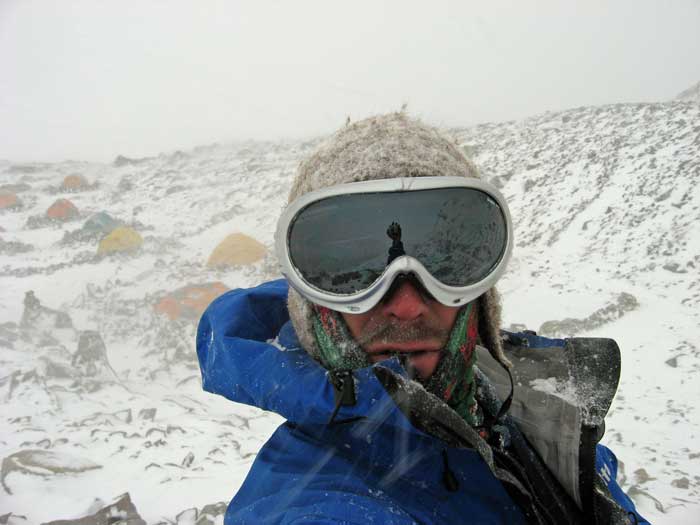Climate of Aconcagua
The climate of the Andes mountain range is determined by various factors: the marine currents ‘Humboldt’ (cold) and ‘Patagonian’ (temperate), the wind and the orography. Except for scarce and brief storms, summer is absolutely dry. The only form of precipitation falls mostly as snow in the great heights. The climate on Aconcagua changes between periods of bright sunlight with little wind, to strong and freezing cold gales. An important thing to remember about the winds on Aconcagua is their chill factor. When winds are strong and cold they can lower the air temperature by as much as 15ºC. This is due to El Niño, a summer phenomenon in the southern hemisphere which dramatically affects weather conditions. It can cause drops or increases in temperature, heavy rains and periods of drought, all of which happen quite frequently across South America. In 1998, the western side of the continent saw no rain at all throughout the winter and spring, leading to extreme drought. El Niño seems to occur in a pattern, with noticeable effects appearing once every 5 years. Following on from 1998, this makes 2013 a potentially vulnerable year.
Weather Systems
Aconcagua, known as "The Colossus of America", has its own unique weather system and can be an extremely harsh and cold environment. The strain that such weather patterns place on the ascent often cause Aconcagua to be compared by climbers to the 8000m peaks of the Himalayas. The low humidity and low oxygen percentage of the air together with strong winds, are only some of the most outstanding characteristics of the weather on Aconcagua. Storms and bad weather are mainly caused by the humid currents of warm see air originating in the Pacific Anticyclone. The winds travel in a southerly direction before rising and clashing against the Andes mountain range, before cooling and precipitating their humidity in the form of snow on the high peaks. In addition to the potential snow and wind storms, Aconcagua is also susceptible to electric storms with thunder and lightning during the summer. Due to its geographical position, lightning can strike during inclement weather especially on the north western peaks and on the summit, which presents an inherent risk with a more difficult descent to safety.
Due to the sheer height of Aconcagua it is often exposed to strong westerly winds (over 5500m above sea level). Added to the large size of the massif this creates a unique microclimate and on the summit peaks forms an enormous and renowned "mushroom" cloud. This phenomenon can be seen from Plaza de Mulas Base Camp, hanging above the upper part of Aconcagua, creating an incredible spectacle and giving a terrible negative forecast. Even when the weather is good at base camps, where this mushroom cloud can be seen it is a telling sign that a violent storm is raging higher up and no attempts should be made to continue ascending in these conditions. Going into this mushroom can be fatal so this warning sign is vitally important to climbers and must not be ignored. On the contrary, winds blowing from a southerly direction are an indication that good weather is on its way. When a storm approaches it is advisable to abandon the upper part of the mountain altogether and wait for it to pass.

Temperature Range
Temperatures are wide ranging with relatively warm days where thin layers of clothing can be worn as well as bitterly frozen nights. As a result of bad weather from the south, the Plaza de Mulas Base Camp temperature can drop as low as -18°C, with corresponding temperatures at the altitude camps around -25°C. In the summer it is possible to wear short trousers during most of the day and night at base camp (4200m) and a simple polar jacket may suffice on the summit. In good summer weather the temperature at night above 5000 metres is about -20°C and on the summit the average temperature is -30°C although it can be considerably higher during the daytime. Although the weather is not always harsh, climbers must always be prepared for sudden changes in the weather.
Aconcagua is not visited in winter when the temperature never goes above 0°C, and the mountain is constantly lashed by strong winds and snowstorms. In the shadowy areas of the mountain the temperature is extremely low and a winter ascent would represent an extremely demanding psycho-physical challenge requiring the best possible mountaineering clothing, equipment and superior technical expertise for any chance of success.
